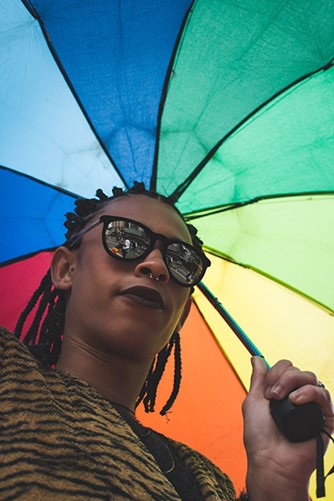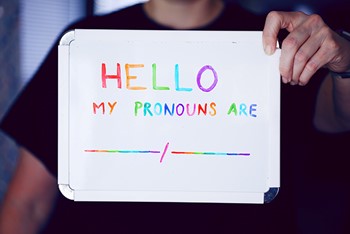‘Is it a boy or a girl?’ Even before a child is born there is a focus on their gender. There is already an idea in mind of what the baby would like when they are a boy or girl, what types of clothes they will wear and toys they will play with. These gender roles based on the sex people are assigned at birth have been topic of discussion, because not everyone fits into the set stereotypes and gender norms. Is it possible to refrain from them? And what if the body you were born with does not match with your true identity?
 To understand this issue better, we need to understand these terms:
To understand this issue better, we need to understand these terms:
Sex: the biologic attributes you are born with, think of chromosomes, hormones, genitalia et cetera. We categorize these attributes into male and female, but one can have both male and female parts. If someone does not fit into the strict binary of the male or female sex, they can be called intersex.
Gender: the cultural attributes and understandings of male and female and their characteristics.
Gender expression: how someone externally expresses themselves. For example, one can dress feminine by wearing dresses, or present masculine by growing their beard.
Gender identity: the personal sense of one’s own gender. Where on the spectrum does this person feel the most comfortable? This is an internal process, and can’t always be seen from the outside.
Transgender: when your gender identity differs from your birth assigned sex.
Non-binary: the umbrella term for people that don’t fall into the male and female category. People who are non-binary don’t conform to the set roles.
Seeing beyond the binary
In most cultures, gender is seen as a binary category, where you are either male or female. However, studies have found sex and gender to be more of a spectrum. One can have attributes of both male and female characteristics.
Why is it important?
The gender topic seems like a modern discussion, but has in fact been going on for ages. There are many hurtful biases towards people that do not fit into the set stereotypes. Transgender people have been subject to discrimination and are more likely to be depressed, because society does not always see and acknowledge them for who they really are.
Harmful gender norms, of how a boy or a girl ‘should be’ result in inequality. Pushing the narrative beyond norms and biases helps us towards an inclusive society where one can do whatever they want, even if it’s not manly or ladylike!
 Gender neutral language and pronouns
Gender neutral language and pronouns
More and more people are aiming for a gender neutral society. Where the body you were born with doesn’t determine what you should wear, like or be. An important step is the use of gender neutral language and using the right pronouns. When we start adjusting our language, we can see the change in our mindset. Language is important to communicate values, and it shapes and reflects how we experience life.
Gender neutral language means that you are not specifying sex or gender when you are talking about someone. This to avoid discrimination or setting biases. Think about how mailmen can be the gender neutral ‘mail carrier’ and stewardess ‘flight attendant’. Also, when referring to a person of whom you do not know their gender, refrain from using gender specific pronouns.
Since you can’t always tell from the outside what gender someone identifies with, it can be polite to ask which pronouns someone prefers. Do you refer to this person as a he, she or they? Listening to what someone prefers as their pronouns shows that you understand this topic and respect the person. Transgender people often get misgendered which is hurtful and can cause problems.
Inclusivity is key
What we love about the human race is how diverse we are, and we should celebrate that! Being aware of the infinite categories on the spectrum and being mindful in our language helps us to be as inclusive as we can. As anyone should feel included in our society. There are many studies about the human brain and body and how it affects sex and gender. The main conclusion: even if we are physically similar, we are all different and that is the beauty of us.

